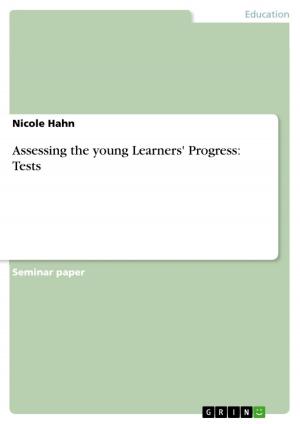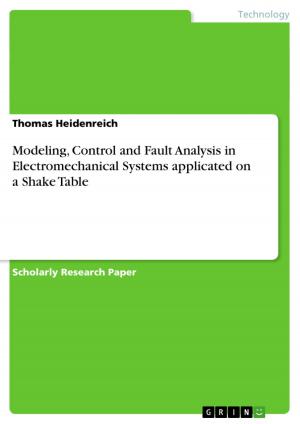| Author: | Marco ZEIMET | ISBN: | 9783638406635 |
| Publisher: | GRIN Publishing | Publication: | August 6, 2005 |
| Imprint: | GRIN Publishing | Language: | English |
| Author: | Marco ZEIMET |
| ISBN: | 9783638406635 |
| Publisher: | GRIN Publishing |
| Publication: | August 6, 2005 |
| Imprint: | GRIN Publishing |
| Language: | English |
Master's Thesis from the year 2004 in the subject Health Science, grade: 74/100 Grade A - First Class, Brunel University (DISC - Department of IS and Computing), course: Master of Science Course at Brunel University London, 84 entries in the bibliography, language: English, abstract: Topic Area and Motivation: Chronic disease care management in diabetes type II patients, living at home and supported by telemonitoring equipment has proven to be both working and useful while adding health value from a clinical perspective. Managerial decisions need however to be based on quantified cost estimations. The challenge today is to show, in which patient groups, positive cost-benefit results can be obtained by the use of telemedicine equipment. The problem statement: While numerous studies have shown clinical value and economical benefit separately, there is a need to identify the cost-benefit ratios applicable to different diabetic patient groups, with varying risk levels. The investment costs in expensive telemonitoring equipment need to be compared to associated clinical benefits obtained in the medium and long-term timeframe. The interest, relevance and importance of the study lays in the cost estimating of care interventions provided to diabetes patient following 'care pathways' in home care settings While similar work has been undertaken in the acute care settings with start-end pathways, the cost estimation of the diabetes follow-up is challenged by a recurring loop-back care pathway. Aims and hypothesis: While it is assumed that the use of telemedicine equipment and related care intervention costs are compensated by a reduction in complications and related health care costs, the aim of the study is to provide a simple model for cost-benefit analysis. Methods: Workload evaluation methods are used to cost-estimate and cost-quantify identified care pathway variables. The resulting cost information is then used as input data in a simple microsimulation model. Microsimulation is designed to identify the target group of instable diabetic patients for whom the use of telemedicine supported monitoring would produce both clinical added value and be cost-effectiveness as compared to the conventional care delivery model. Results: The microsimulation model is producing a breakeven point (cost benefit levels reached over determined periods of time) thus identifying parameters about which patient profiles can be cost-beneficially used for the telemedicine modality.
Master's Thesis from the year 2004 in the subject Health Science, grade: 74/100 Grade A - First Class, Brunel University (DISC - Department of IS and Computing), course: Master of Science Course at Brunel University London, 84 entries in the bibliography, language: English, abstract: Topic Area and Motivation: Chronic disease care management in diabetes type II patients, living at home and supported by telemonitoring equipment has proven to be both working and useful while adding health value from a clinical perspective. Managerial decisions need however to be based on quantified cost estimations. The challenge today is to show, in which patient groups, positive cost-benefit results can be obtained by the use of telemedicine equipment. The problem statement: While numerous studies have shown clinical value and economical benefit separately, there is a need to identify the cost-benefit ratios applicable to different diabetic patient groups, with varying risk levels. The investment costs in expensive telemonitoring equipment need to be compared to associated clinical benefits obtained in the medium and long-term timeframe. The interest, relevance and importance of the study lays in the cost estimating of care interventions provided to diabetes patient following 'care pathways' in home care settings While similar work has been undertaken in the acute care settings with start-end pathways, the cost estimation of the diabetes follow-up is challenged by a recurring loop-back care pathway. Aims and hypothesis: While it is assumed that the use of telemedicine equipment and related care intervention costs are compensated by a reduction in complications and related health care costs, the aim of the study is to provide a simple model for cost-benefit analysis. Methods: Workload evaluation methods are used to cost-estimate and cost-quantify identified care pathway variables. The resulting cost information is then used as input data in a simple microsimulation model. Microsimulation is designed to identify the target group of instable diabetic patients for whom the use of telemedicine supported monitoring would produce both clinical added value and be cost-effectiveness as compared to the conventional care delivery model. Results: The microsimulation model is producing a breakeven point (cost benefit levels reached over determined periods of time) thus identifying parameters about which patient profiles can be cost-beneficially used for the telemedicine modality.















